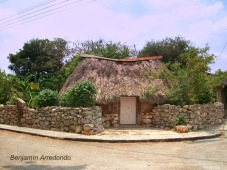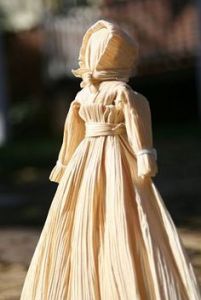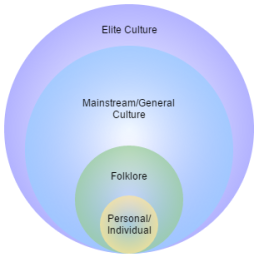
Like all bloggers, I have been struggling with what to write for my first post. But I’ve finally decided to tackle the large subject matter of exactly what “folklore” all entails. So, without further ado, let’s dive right in and examine what exactly folklore means.
WHAT IS FOLKLORE?
Let’s start with looking at folklore in a linguistic sense. It is a compound word of “folk” and “lore”. Unlike, folkloreate (the title of this blog), folklore is a word that you can find in any dictionary. And just about everyone has used it to refer to something-or-other at some point. But, let’s break up the word and then reassemble it.
Folk: of or relating to the traditional art or culture of a community or nation.
Lore: a body of traditions and knowledge on a subject or held by a particular group, typically passed from person to person by word of mouth.
Therefore,
Folklore: the traditional beliefs, customs, and stories of a community, passed through the generations by word of mouth.
BUT, WHAT IS FOLKLORE?
Josh Clark, from Stuff You Should Know, while trying to define folklore in a podcast said:
“…it’s kind of like nailing jelly to the wall.”
And he couldn’t be more right. The problem seems to arise from the fact that most folklorists tend to be cultural relativists (i.e no-one is wrong, so long as you look at it from their point of view). In and of itself, this is a good thing. They quietly catalog to the best of their ability while leaving their bias at home. Great! But, what exactly are they recording? What is folklore?
Folklore boils down to being just about anything. But, this doesn’t mean everything is folklore. I kind of started thinking of it as if you’re looking through a lens or a set of magnifying glasses…
But you can also think of it perhaps as a bit of a pyramid too. On the top of the pyramid you have what people, the elitists of a country or culture, are selling you as their image. What the culture ought to be. This is of course in a perfect world and it’s what people aspire to but unfortunately its rarely the reality. In the middle we have some of the general trends of a culture or group. This is kind of what most people are up to. But even this overall view sometimes falls short of what we do in our day to day lives.
Folklore focuses in on what people are really doing in small groups, day in and day out. It focuses on details, rather than all encompassing trends. At least, that’s the way I’ve come to understand it. Folklore is about recording the minuet differences and not trying to glob everything together under one big header.
So, in this frame of mind, the definition I have settled on is a very short one, but one that is full of complex meaning. I stole it from this video, and I’m sure Dr. Andriy Nahachewsky is adapting it from another source all together.
So, very simply put, folklore can be defined as, (drum-roll please):
Vernacular culture.
Short and sweet. But lets examine it piece by piece. Since that is some very condensed, meaning packed vocabulary right there.
VERNACULAR
I absolutely adore this word. I first came across it while studying architecture at a small, private university in Mexico. Vernacular is beautiful, and if I had continued and finished my studies, I probably would have done a dissertation relating to it at some point. But, well, that’s ancient history now.
So, what does vernacular actually mean? In a literal sense, we can define vernacular as something used or implemented by the ordinary people in a particular country, region or social group. In architecture that meant that we actually looked at houses that people built. Local people. People who lived and breathed in the structures and who didn’t pay some fancy architect to build it for them.
 These people weren’t building skyscrapers, they were building homes, with a hearth and a heart. It often makes me think of a book I picked up called “The Barefoot Architect”.
These people weren’t building skyscrapers, they were building homes, with a hearth and a heart. It often makes me think of a book I picked up called “The Barefoot Architect”.
Vernacular is the result of building the way your grandfather before you built. You start with what he knew and then add your own ideas onto it. No blueprints, no plans, just simple knowledge handed down through generations. What worked for them will work for you. It’s personalized to your climate and your lifestyle. It fulfills your most basic needs.
This is the essence of vernacular. Now that we have our scope narrowed down to the vernacular, i.e. local level, we can start looking at the next part of our definition.
CULTURE
So, anyone who has taken a history or anthropology or sociology or even psychology class has come across this term. It’s breadth is wide, but we’ve already narrowed our breadth down to the vernacular, down to the barest local level. We’ve stripped away the macro and focused in on the micro. What small groups of people are doing and sharing in their everyday circumstances.
Culture is split into several different categories pertaining to people, and folklore follows a similar pattern. It is split into four main categories as illustrated in the diagram below.
HOW THEY MINGLE
 Each of these categories may be interacting with one another, and most often are. Most people are most familiar with folklore in the context of narratives. These are the stories, myths, legends, and fairy-tales. But they’re also the proverbs, jokes, riddles and tongue twisters.
Each of these categories may be interacting with one another, and most often are. Most people are most familiar with folklore in the context of narratives. These are the stories, myths, legends, and fairy-tales. But they’re also the proverbs, jokes, riddles and tongue twisters.
So, what would be a folklore “artifact”? Seems like an odd concept but it’s not if we look at it closely. Most beliefs, customs and artifacts are created around a narration or a story or a belief of some kind. Or, well, it can be a chicken-or-the-egg kind of scenario.
Sometimes we don’t know which came first, the custom and then the story to explain it, or whether the story created the artifacts or custom. Either way, if there is a bridge between them, then you are most likely looking at a piece of folklore.
For example,
We’re going to take a minute and get up close and personal in my business. Well, not really, but we’re going to use Czech folklore (technically my heritage) as an example to illustrate the different categories of folklore. But first, just for tickles, let me share a little about my family history.
I come from a long line of storytellers, I would almost go as far as to say it is built into my very genes. My grandfather’s nickname was Gaby, not because his name had anything to do with Gabriel (it was actually John), but because he had no shortage of stories. His tall tales made their rounds far and wide through the taverns of rural Wisconsin.
Unfortunately, he passed away before I was born, but his stories lived on in a “telephone” party game sort of way. But his mother-in-law, my great-grandmother Tena, managed to live to be 102. And if there is a great storyteller in our family’s recent history, she was it. She practiced folk-medicine and told tales that taught and tales that entertained. Her legacy lives on right on down to her great-great-great (yes, three is right) grandchildren today.
But that’s enough about me, let’s get back to the real purpose of this jabber. I mentioned earlier that there was such a thing as folklore “artifacts.” If we look at this from a Czech, or bohemian perspective, one very clear example comes instantly to mind. The Corn Husk Dolls. I played with these as a little girl, although their primary use in our households were as decor from the “old country” (not that we actually called it that).
 Little did I know that there was a very rich history surrounding these dolls. (If I had known that, I might have not chewed on them so much.) They are by no means unique to Czech culture and are actually found throughout various parts of eastern Europe. And those of you who know your crop history would probably have realized that they are unable to date back before the Europeans made contact with the Americas. Seeing as they are made from corn husks themselves.
Little did I know that there was a very rich history surrounding these dolls. (If I had known that, I might have not chewed on them so much.) They are by no means unique to Czech culture and are actually found throughout various parts of eastern Europe. And those of you who know your crop history would probably have realized that they are unable to date back before the Europeans made contact with the Americas. Seeing as they are made from corn husks themselves.
So, the folk tradition that is commonly associated with them (here in Wisconsin) Is actually an Oneida Native American folktale (I actually didn’t know it was Oneida until I started investigating this article). This tale strives to explain why the doll has no face. It’s about vanity and punishment, and these are the themes I remember from the story. Through this we can see a clear connection between the “artifact” (i.e. the doll) and the oral history (i.e. folktale).

Another wonderful example would be the traditional folk-dances of the Czech republic. These dances often employed ballads that are simply glorified oral histories. Therefore we can quickly see the link between the oral history (ballad) and the custom (Czech folk-dance) that accompanied them.
The list goes on and on, but hopefully through these brief examples it was made more clear what exactly folklore is and where it comes from. It’s just like taking a witch’s cauldron and throwing in ordinary people, their oral traditions, and all the by products of those oral traditions. And vuwala! You’ve made yourself a Folklore concoction.
So, what’s your take?
I did my best to share and explain folklore in < 2000 words. Now, I pass it on to you. What is your take on folklore? What is folklore to you?

